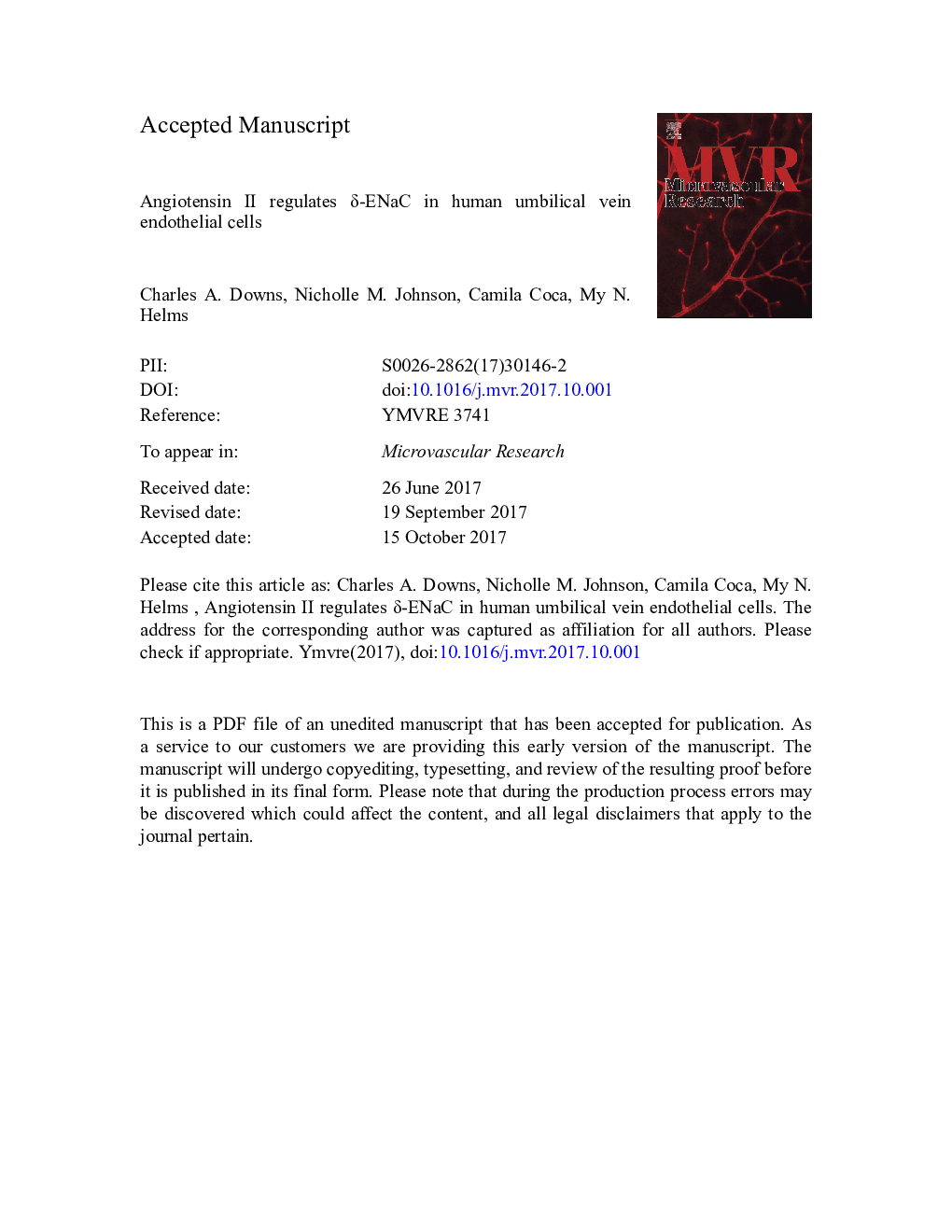| Article ID | Journal | Published Year | Pages | File Type |
|---|---|---|---|---|
| 8340940 | Microvascular Research | 2018 | 27 Pages |
Abstract
The amiloride-sensitive epithelial sodium channel (ENaC) has been characterized in a variety of non-epithelial tissues. In the current study we sought to understand the effect of angiotensin II on δ ENaC function using human umbilical vein endothelial cells (HUVECs). The δ ENaC subunit is found in humans, but notably absent in rat and most mouse epithelial tissues. In this study we report the presence of δ ENaC in HUVECS with a half-life of ~ 80 min and a change in δ ENaC abundance when HUVECs were treated with angiotensin II. We also observed that angiotensin II increased apical membrane expression of δ ENaC and decreased protein ubiquitination. Equivalent short circuit current measurements showed angiotensin II increased δ ENaC ion transport in HUVEC cells. Treatment with the antioxidant apocynin attenuated angiotensin II mediated effects indicating an important role for angiotensin-derived H2O2 in δ ENaC subunit regulation. Whole cell recordings from oocytes injected with δβγ ENaC shows H2O2-sensitive current. These results suggest that δ ENaC subunits can make up functional channel in HUVEC cells that are regulated by angiotensin II in a redox-sensitive manner. The novel findings have significant implications for our understanding of the role of ENaC in vascular conditions in which oxidative stress occurs.
Keywords
DMEMFBSHUVECSENaCDulbecco's modified Eagle's mediumROSVascular injurySDS-PAGESodium dodecyl sulfate polyacrylamide gel electrophoresisNADPH oxidaseOxidative stressTERfetal bovine serumHuman umbilical vein endothelial cellstransendothelial electrical resistancenicotinamide adenine dinucleotide phosphate-oxidaseepithelial sodium channelEpithelial sodium channel (ENaC)Reactive oxygen species
Related Topics
Life Sciences
Biochemistry, Genetics and Molecular Biology
Biochemistry
Authors
Charles A. Downs, Nicholle M. Johnson, Camila Coca, My N. Helms,
